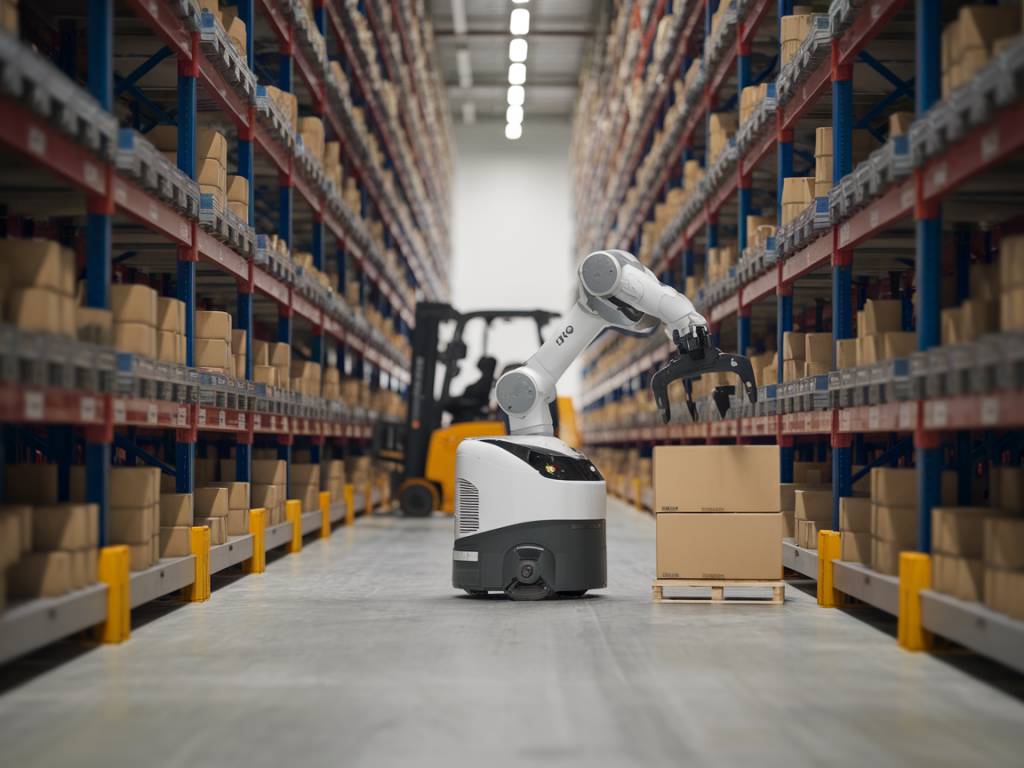In recent years, the focus on sustainability within the logistics industry has significantly increased. Companies are recognizing not only the environmental impact of their operations but also the economic benefits that can be gained through sustainable practices. One of the key drivers of this change is automation. By leveraging the latest technologies, businesses can streamline operations, improve efficiency, and most importantly, reduce their carbon footprint.
The Importance of Sustainability in Logistics
Sustainability in logistics is gaining traction due to various factors including regulatory pressures, consumer demand, and the intrinsic benefit of cost savings. With the logistics sector being one of the largest contributors to carbon emissions, taking steps to become more sustainable offers a dual advantage of helping the environment and improving the bottom line. Moreover, sustainability is no longer just a buzzword but a critical strategy for maintaining a competitive edge.
Automation: The Cornerstone of Sustainable Logistics
Automation in logistics involves the adoption of technologies such as robotics, artificial intelligence (AI), and the Internet of Things (IoT) to manage and optimize supply chain operations. These technologies serve as catalysts for reducing waste, enhancing efficiency, and minimizing carbon emissions.
Robotics and Warehousing
One of the most evident applications of automation within logistics is the use of robotics in warehousing. Robots can perform tasks such as picking, packing, and sorting more efficiently than human workers, which results in less waste and lower energy consumption. Importantly, robots can operate 24/7 without fatigue, which leads to faster processing times and reduced need for extensive lighting and climate control, further saving energy.
Artificial Intelligence for Route Optimization
AI plays a crucial role in route optimization, which directly impacts fuel consumption and emission levels. By using predictive analytics and real-time data, AI can determine the most efficient routes for delivery vehicles. This not only reduces travel distance and time but also minimizes fuel usage and carbon emissions. Moreover, AI can also predict and avoid potential delays due to traffic congestion or adverse weather conditions, ensuring that deliveries remain efficient and timely.
Internet of Things (IoT) and Fleet Management
The IoT encompasses a network of interconnected devices that can communicate and share data. In logistics, IoT devices can be used for various applications, including fleet management. Sensors installed on vehicles can monitor fuel consumption, tire pressure, and engine performance in real-time. This data helps in maintaining optimal vehicle conditions, thereby improving fuel efficiency and reducing emissions. Additionally, IoT devices can track and monitor the conditions of goods being transported, ensuring that they are stored in an ideal environment, which reduces waste and spoilage.
Electric and Autonomous Vehicles
Electric vehicles (EVs) and autonomous vehicles are becoming increasingly popular as sustainable alternatives to traditional fuel-powered transport. EVs produce zero tailpipe emissions, greatly reducing the carbon footprint of logistics operations. Autonomous vehicles, on the other hand, are programmed to drive in the most efficient manner, avoiding unnecessary idling and aggressive driving that leads to higher emissions. The integration of EVs and autonomous vehicles into logistics fleets represents a significant stride towards achieving sustainable logistics operations.
Energy-Efficient Warehouses
Modern warehouses are increasingly being designed with energy efficiency in mind. Automation technologies such as smart lighting systems and HVAC (Heating, Ventilation, and Air Conditioning) systems can significantly reduce energy consumption. For instance, smart lighting systems adjust the intensity of lights based on the presence of workers or the time of day, thereby saving energy. HVAC systems, when coupled with sensors and automated controls, can maintain warehouse temperatures within an optimal range without excessive energy use.
Renewable Energy Integration
Another way to enhance the sustainability of logistics operations is by integrating renewable energy sources such as solar and wind power. Automated systems can efficiently manage the distribution and storage of renewable energy within logistics facilities. For example, warehouses equipped with solar panels and battery storage systems can generate and store their electricity, reducing reliance on non-renewable energy sources and lowering carbon emissions.
Circular Economy Practices
Automation also facilitates the implementation of circular economy practices within the logistics sector. By automating the processes involved in recycling and repurposing materials, companies can reduce waste and extend the lifecycle of their products. Automated sorting systems, for instance, can segregate recyclable materials more accurately and efficiently than manual methods, leading to higher recycling rates and less landfill waste.
Integrating automation technologies into logistics operations is not only beneficial for improving efficiency and reducing costs but is also essential for minimizing environmental impact. As the logistics industry continues to grow, the adoption of sustainable practices through automation will become increasingly critical in reducing carbon footprints and meeting environmental goals.
Summary: This article explores the importance of sustainability in logistics and how automation technologies can help achieve it. By implementing robotics, AI, IoT, electric and autonomous vehicles, and energy-efficient practices, businesses can reduce their carbon footprint and enhance overall efficiency in their logistics operations.




